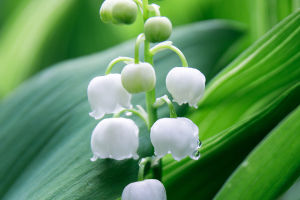Cotton is a vital economic crop with a growth cycle divided into several key periods: emergence, seedling, budding, flowering and bolling, and harvesting.
Each period has its own unique physiological characteristics and management requirements, making scientific understanding and management critical for achieving high productivity and efficiency.
1. Emergence Period
The emergence period refers to the stage from sowing to seedling emergence. This period typically lasts from 7 to 10 days, depending on climate conditions and planting methods. The key to the emergence period is ensuring seeds germinate and emerge quickly and evenly.
At this stage, temperature and humidity are the main factors affecting seedling emergence. The optimal germination temperature for cotton seeds is between 20-30 degrees Celsius.
Suitable soil moisture promotes water absorption and germination of seeds. Additionally, the sowing depth should be appropriate, generally 3-5 cm, as too deep or too shallow sowing can affect the emergence rate.
In terms of management measures, soil treatment should be carried out before sowing to ensure that the soil is loose, fertile, and disease-free. After seedlings emerge, field conditions should be checked promptly to prevent pests and diseases and to ensure the healthy growth of the seedlings.
2. Seedling Stage
The seedling stage refers to the period from the emergence of seedlings to the budding stage, usually lasting 50 to 55 days. During this stage, seedlings grow rapidly, roots gradually penetrate the soil, the number of leaves increases, and photosynthesis strengthens.
The main task during the seedling stage is to promote the growth of roots and leaves, laying a solid foundation for subsequent reproductive growth.
Proper irrigation and fertilization are crucial, providing sufficient but not excessive water to prevent waterlogging, and an appropriate amount of nitrogen fertilizer to promote leaf growth.
During this stage, it is also important to pay attention to the prevention and control of pests and diseases, especially common pests such as cotton aphids and red spider mites. Timely application of pesticides or biological control measures can ensure the healthy growth of seedlings.
3. Budding Period
The budding stage, lasting about 30 days, is the period from the appearance of buds to the first flowering. This stage is critical for cotton as it transitions from vegetative growth to reproductive growth.
The main task during the budding stage is to promote more branches and buds to form a good plant structure. Management should focus on a balanced nutrient supply and timely top dressing, primarily with phosphorus and potassium fertilizers to promote flower bud development.
Water management is also crucial, keeping the soil moist but not waterlogged to support root and flower bud growth.
4. Flowering and Bolling Period
The flowering and bolling stage spans from the first flowering to the maturity of most cotton bolls, usually lasting 45 to 50 days. This period is critical for cotton yield formation, with a large number of flowers and bolls developing, which determines the final yield and quality.
This stage requires ample nutrients and water, necessitating enhanced fertilizer and water management.
Appropriate top dressing, primarily with nitrogen fertilizer combined with phosphorus and potassium, promotes the development of cotton bolls. Proper irrigation is necessary to keep the soil moist and avoid drought and waterlogging.
5. Harvest Period
The harvest period, lasting 70 to 80 days, refers to the time from when cotton bolls split and fluff to the actual harvest. This stage is crucial as it ultimately determines cotton yield and quality.
Management during this period focuses on promoting smooth cotton boll opening and improving cotton quality. Irrigation should be reduced to avoid affecting the maturation and fluffing of cotton bolls. Additionally, timely topping can reduce nutrient consumption and promote boll maturity.
When harvesting, it is best to choose sunny weather and avoid picking on rainy days to prevent the cotton from becoming damp and mildewed. After harvesting, the cotton must be dried and stored promptly to maintain its quality.
Conclusion
In summary, the life cycle of cotton can be divided into five main stages: emergence, seedling, budding, flowering and bolling, and harvesting. Each stage has its unique physiological characteristics and management requirements.
Scientific understanding and management of these periods are crucial for improving cotton yield and quality. Through reasonable field management measures, such as timely irrigation, fertilization, and pest control, we can promote the healthy growth of cotton and achieve a bountiful harvest.


